Cookbook expanded our nutrition food horizons
Article by Elena del Valle
Photos by Gary Cox (except book cover and author courtesy of Sterling Publishing)
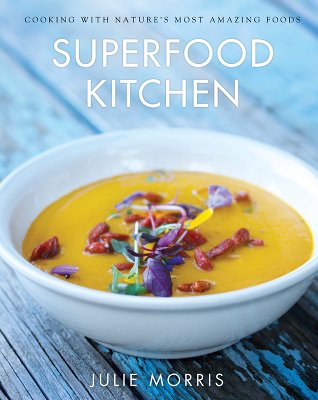
Superfood Kitchen book cover
When we first looked at the recipes in Superfood Kitchen Cooking with Nature’s Most Amazing Foods by Julie Morris (Sterling Epicure, $24.95) we were taken aback by the number of ingredients we were unfamiliar with and the difficulty in finding them in our suburban area. In the end, we had to shop at a number of stores and order part of the ingredients online. What we liked about the recipes we tried was their taste, simplicity and nutritional value. Morris is executive chef for Navitas Naturals, a superfood seller.
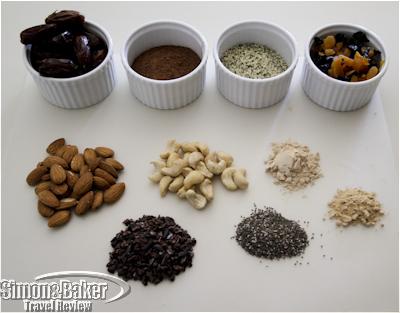
The energy bars required ingredients we had to buy
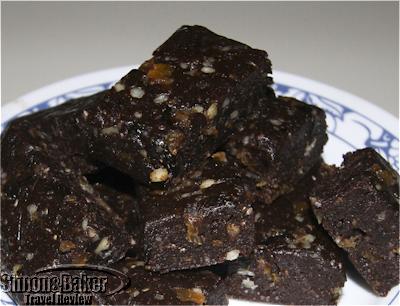
Our energy bars, made with superfoods
The 237-page hardcover book published in 2012 is peppered with color photos and divided into four main parts: Understanding Superfoods, Creating a Superfood Kitchen, Recipes, and Extras. Morris beings by defines superfoods as nutrient rich and beneficial for health and well-being. The idea behind her book, she explains, is to combine flavors and textures in a nutrient rich way toward a “collection of some very super parts.” She goes on to list and define the ingredients of the superfood kitchen and their nutritional benefits. Morris, a natural-food chef, advocates whole plant-based foods and superfoods.
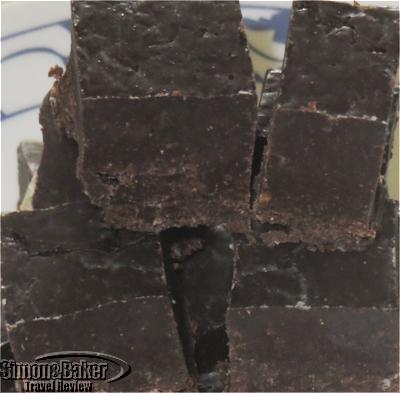
The Dynamite Fudge has become a favorite dessert
Cacao, she explains, is one of the most antioxidant-rich foods. It also offers “useful quantities” of iron and calcium as well as phytochemicals and amino acids that aid in elevating mood brain chemistry. It tastes like strong chocolate without the sweetness, she goes on to say, and improves when served with mesquite powder, carob, dates or ingredients with caramel flavors to soften the bitter edge.
She says maca is a root from the Peruvian Andes, and that Inca warriors relied on it for stamina and strength in battle. As an adaptogen, she says, the plant food may counter the different stresses of the body. It provides energy and combats fatigue, according to the book, without stimulating. It also offers sixty phytonutrients including sterols believed to help block cholesterol.
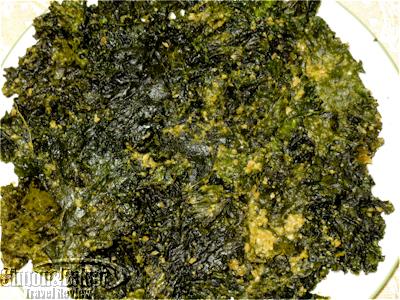
We often have kale crisps in between meals
To date we have tried four recipes: Chocolate Energy Bar from the Breakfast section, BBQ Sweet Potato Fries from the Sides section, Cheesy Kale Crisps from the Snacks section, and Dynamite Fudge from the Sweets section. On more than one occasion we adjusted the recipe to the ingredients we could find or to our preferences. For example, we left out the chili powder and cayenne pepper powder in the fries recipe.
The first time, we tried the fudge we substituted the maqui powder with additional quantities of the other ingredients in the recipe because we had been unable to find the maqui powder in our area. Eventually we received the maqui powder in the mail and made another batch of the fudge. We liked both fudge types, with and without the maqui.

Julie Morris, author, Superfood Kitchen
The recipes we have tried have become regulars in our dietary rotation. We keep energy bars and fudge in the refrigerator and make fresh sweet potato fries and kale crisps the day we eat them. As time allows we plan on sampling additional recipes.







